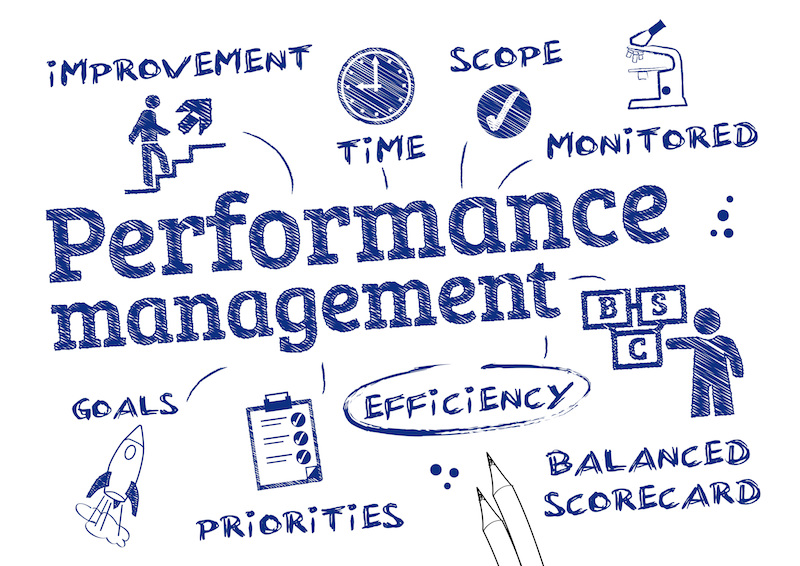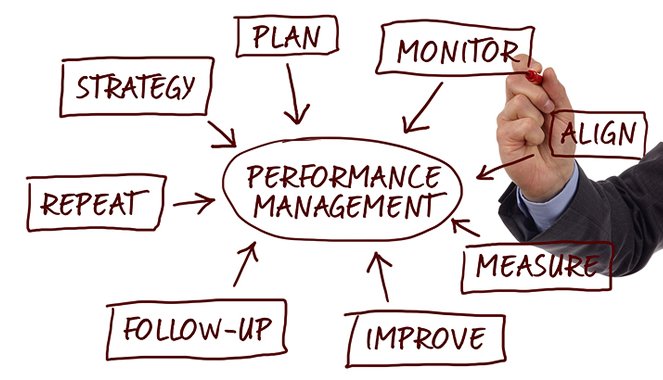
Portfolio Performance Management
Table of Contents
Although components in a portfolio don’t have to be interdependent or share similar objectives, they should have at least common characteristics, so they can work towards the same goal, and allow efficient and centralized management. This requires careful selection to arrive at an optical mix of proposed projects, programs and operations. This activity is called portfolio management, and is vital to organizations to reach their strategic objectives. But once the right mix and sequencing of proposed projects and programs are established, portfolio performance management follows.
Failure to monitor portfolio performance can have direct consequences. They could end up using resources ineffectively, or fail to meet organizational objectives, because monitoring, analysis and evaluation are lacking. Suffice to say that an organization can’t afford not to have a portfolio performance management plan.
What is Portfolio performance management?
Portfolio performance management plans, measures and monitors the organizational value of a portfolio in a systematic manner, based on the achievements against strategic goals. Part of the process of portfolio performance management is to manage how key resources, such as human resources, finances and assets are sourced to obtain optimal results.
Portfolio performance management must be linked to organizational strategy as well, which is expressed through its vision and mission, taking into account an organization’s orientation to market, environmental factors and competition. Through an effective organizational strategy, an entity will be able to define directions for development and growth, and performance metrics for success.
Organizational strategy needs portfolio performance management to ensure fulfillment of the strategies used, and to facilitate the alignment of portfolio components by strengthening structural, technological, cultural, human resource practices, and other organizational enablers.
For an organization to clearly justify why a particular resource has to be invested in a specific project, it must first identify its organizational value areas where components are most likely to impact. A project can have two or three value areas, such as increased revenue from existing customers, or the potential to bring in new customers. There are also instances where a project is not valuable, and this is something an organization must recognize when making decisions.

Understanding the importance of performance metrics in portfolio performance management
In order for an organization to gauge the performance of a portfolio, it needs to identify key performance indicators, which are mechanisms used to evaluate if the mix of portfolio components can lead to success or the opposite. In portfolio performance management, performance metrics must be quantitative, qualitative, tangible and intangible.
Quantitative measures include the increase in revenue, the decrease in cost, the change in Net Present Value, the return on investment, the internal rate of return…
Qualitative and intangible measures include portfolio strategic alignment, legal and regulatory compliance, sustainability and corporate responsibility, and portfolio risk management.
Apart from performance metrics typical attributes of a portfolio are also collected and analyzed, as part of the portfolio performance management process. These include:
- Consumption of scarce resources, whether human, financial or material
- Total expected cost
- Expected timeline magnitude and timing of benefits that must be realized
- Relationship or interdependence of portfolio components
- Schedule of investment
Using these KPIs, organizations can easily monitor the performance of a project or portfolio, which is essential to portfolio performance management. There are several ways to track and monitor KPIs, but the most popular is using dashboards, which quickly communicates to sponsors and stakeholders the status of a portfolio against expectations.
A portfolio dashboard displays multiple KPIs in one platform or sheet, which makes it easy, even to a casual observer, to read various data points. It can be showcased in many ways, such as tiled, stack, pie chart or a graph.
For easy portfolio performance management, best practices for dashboards should be followed:
- A singular dashboard should not contain too many KPIs. Break them down into separate dashboards based on common performance metrics.
- Present a dashboard in a clutter-free and organized manner. When using chart tiles, for example, keep tile sizes uniformed.
- Highlight specific data point that need to stand out.
- Take advantage of all the tools you can integrate with a dashboard, such as drill down, tool tip, zoom, filter and color adjustment.

What are the processes of portfolio performance management?
For what seems to be a long-winded process, with plenty of factors to consider, portfolio performance management only involves 3 major steps: to develop a portfolio performance management plan, manage supply and demand, and manage portfolio value.
Develop a Portfolio performance management plan
A portfolio performance management plan is either a branch or a component of the portfolio management plan, which explains a portfolio’s value is defined. In portfolio performance management, a portfolio’s value only becomes evident when its components are utilized by the stakeholders, customers, portfolio beneficiaries, the organization and the community. Thus the need for a plan to put everything in perspective.
Developing a portfolio performance management plan starts with a review of the vital factors that influence project success:
- Goals specified in the portfolio strategy plan
- The objectives necessary to reach those goals
A portfolio performance management plan also details how portfolio components are allocated for human, financial, and equipment or material resources. This is where portfolio resource management planning comes into play, because of the need to determine how resource capacity can be managed for effective utilization, and to adapt to the changing demands that will ensure a mix of portfolio component will generate maximum value.
The same plan is also used to define parameters for optimal resource capacity utilization, and to set acceptable ranges should deviations and other changes arise. It also documents how an organization measures, monitors, controls and reports resource management, portfolio performance and portfolio value.
Portfolio performance management plan involves two aspects : Portfolio Value and Portfolio Reporting. The former refers to the realization of benefits associated with the components of a portfolio that have been tracked and optimized to achieve maximum organizational value. The latter, on the other hand, is where performance metrics of a portfolio are determined and provided to stakeholders in the governing body. Through portfolio reporting, sponsors will be able to understand how expected benefits can be achieved based on the performance of a portfolio, which is crucial to portfolio performance management.
Manage supply and demand
In portfolio performance management, supply refers to the resources capacity and other aspect shared among portfolio components. Demand, on the other hand, refers to the resource requirement of the components in a portfolio. It is identified based on each initiative’s business plan or case.
Once the inventory of resources and capabilities are aggregated at the proper level of detail, it is then mapped to existing organizational resources or supply, such as funds, tangible and intangible assets, and human resources. To ensure equal distribution of portfolio resources, there must be a master schedule of resource allocation.
In Portfolio performance management, the goal in supply and demand management is to ensure that resource capacity is allocated against resource requirements optimally, and organizational priorities and potential value must be considered. This requires achieving balance between supply and demand.
How to balance supply and demand in portfolio performance management
The process will depend if an organization have unlimited resources (projectized organizations), or mainly rely on resources procured through various channels based on demand (resource constrained). Between the two, the latter is more challenging to balance, since labor resources are used in both operational and project work. If there are fluctuations in operational workload, for example, resources allocated for the project will be affected, which will also have an impact on the portfolio. This is why a balance of supply and demand is vital in portfolio performance management.
Supply and demand monitoring
The success of a portfolio relies on many things, but continuous and ongoing monitoring of supply and demand is critical. After all, demand would not be met when resources are constrained. This is why resources must be allocated in a way that it is matched to the demands of a project. There must be continuous analysis of changing resource requirements, and the resource needs for planned and approved portfolio components against resources available.
Manage portfolio value
In portfolio performance management, a portfolio value is defined as the aggregate value resulting from the components of a portfolio, with the goal to deliver the possible maximum value that is aligned with organization’s strategic objectives and an acceptable level of risk.
The value of a portfolio can be measured based on its impact on revenue growth, operating margins, customer/employee satisfaction, branding, community and the environmental resources. These dictates how well a portfolio performance management is.
How value is defined varies from one organization to another, but it is best to have a value measurement framework that will serve as a guide to:
- Organize value that needs to be created
- Create a plan for measuring value
- Recognize possible types of value
The value measurement framework also supports portfolio decision-making with regards to authorizing components based on its expected maximum net value. It operates on the premise that the net value is a result of the expected gross benefits against the time and resources that need to be invested.
What affects value in portfolio performance management?
Any changes in the portfolio component will affect the expected portfolio value. These include changes in the schedule, cost, actual scope and performance. How these changes come about, however, may be due to external factors, such as competitor action, laws and regulations, market conditions, risks realized, and factors that affect products, services or asset delivery.
Throughout the entire portfolio performance management process, there is a cycle of monitoring and adjustment to ensure that the intended benefits are gained and portfolio value is realized. So for every time components are completed and the consequential benefits and value are realized, measures are taken to drive the correct work into the portfolio.

Portfolio success through effective portfolio performance management
For portfolio performance management to be successful, sponsors, stakeholders and portfolio managers should well-versed on what portfolio management entails. The focus is to achieve organizational strategies and objectives, but the problem is that implementation could take months or years, and usually spans across the entire organization. So measuring and achieving portfolio success is often complex, time-consuming and labor-intensive.
But there are ways to measure success.
According to the Project Management Institute (PMI), the success of a portfolio is measured in terms of the performance of aggregate investment, and the benefits resulting from a portfolio. This means measurement happens over an extended period, depending on the lifespan of a portfolio. Benefits, on the other hand, refer to those that arise from a portfolio’s associated business case that promise benefits. Most of the time, they are realized after a project or program is closed.

Portfolio success criteria and factors in portfolio performance management
What better way to measure a portfolio’s success than to use a set of criteria? In a seminal paper written in 1952, Harry Markowitz laid down the foundation for the Modern Portfolio Theory (MPT) that helps determine the specific mix of investments that will generate the highest return, given an acceptable level of risk.
The four criteria are:
- Financial value of a portfolio
- Strategic success
- Selecting and Balancing
- Project success
Together they create a portfolio performance management plan that is designed to maximize a portfolio’s financial value, link its success to organizational strategy, create a balance between the projects within a portfolio and an organization’s capacity, and to achieve as much as the average single project success.
While a success criterion matters in portfolio performance management, nothing is more critical than a portfolio’s success factor that, according to Bolles & Hubbard (2007), influences a portfolio’s successful implementation within an organization. If all success factors are addressed and followed, portfolio success is guaranteed.
Portfolio success factors include, but not limited to:
- Total support and commitment from top executives, particularly in decision-making approach.
- Effective and clear communication of strategic objectives, so everyone across the organization is well-aware of the decision-making process and organizational goals.
- Strategic alignment of the investment selected with the framework to be used.
- An institutionalized management process to facilitate constant evaluation.
- Align decision-making with governance framework.
- Create an integrated discipline of program/project management
- Risk and performance measurement at a consistent and continuous level
- Review portfolios in support of realigning investment priorities
- Balance investments effectively
- Turn strategy into operational excellence
Components prioritization is also a key success factor in the Portfolio performance management process. There is a positive relation among portfolio selection, strategy success and project portfolio performance.


















